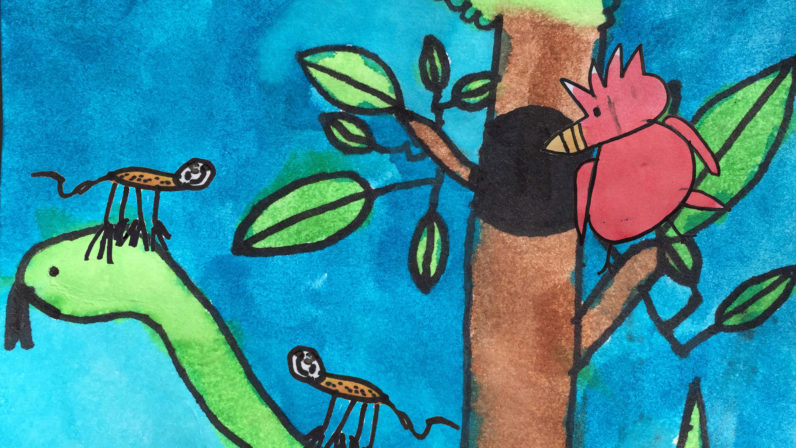Monday in the kindergarten class was a spontaneous preview of our summer art camp. The class has been studying Ecuador, guided by their student teacher who is from there. As part of their study, the Galapagos Islands became a topic of discussion. This grabbed my attention and brought back strong memories of a student who visited the Galapagos with his parents in 2007. Parker was a student in my 4th/5th grade classroom, and after he left the Seed we continued to work weekly on a variety of tech projects. One of his most significant projects was a slideshow of his trip to the Galapagos Islands. I dug up that slideshow on Monday and showed it to the kindergarteners. It was quite a blending of experiences, sitting there showing them Parker’s slideshow of marine iguanas, blue-footed boobies, and baby sea lions. The kindergarteners also loved seeing photos of Lonesome George, the last of the giant Galapagos tortoises.
As expected, side topics arose. There was a photo of Galapagos penguins (https://www.arkive.org/galapagos-penguin/spheniscus-mendiculus/) that inspired all sorts of conversation. We talked about what the equator is and how remote the Galapagos Islands are. The kindergarteners were impressed with the slide of Parker and his parents walking among the giant tortoises. In the beginning of his slideshow, Parker referred to the Galapagos as “a zoo without gates.” I mentioned that one reason humans could be so close to the tortoises, without gates or fences, was because the number of people allowed to come to the islands is limited. While we didn’t pursue the human impact on places like the Galapagos, I could see the potential. In fact, it’s why we chose this year’s summer art camp theme.
“Creatures of the Earth and Sky” will be a six-week experience of celebrating Earth’s varied inhabitants, exploring different places around the planet, including deserts, oceans, mountains and forests, polar regions, rainforests and jungles, and pets at home. Students will learn about creatures that live in each place and how humans affect their lives. Endangered species will be a part of the conversation and art. Learning about humans who are working to protect creatures of the planet will be emphasized. We’ll also explore ideas for child-directed projects to further the well-being of non-human creatures. Although we won’t likely make it to the Galapagos Islands this summer, we’ll be there in spirit, as well as other equally unique places on Planet Earth.
for more information about the 2018 Seed summer art camp:

